Woolly buggers & variants
{{start}}
My understanding is that the Woolly Bugger has its origins in America where it appears to be tied, as a leach imitation. having said that there is also an English fly with bead chin eyes called a Dog Nobler that is very similar to a traditional Woolly Bugger. Whatever the name or origin this style of fly is a great fish taker in a wide range of conditions. There are probably more variations to the Woolly Bugger than I have had breakfasts. Some are over-dressed some under-dressed, some weighted other not, on all sorts of hooks and in all sorts of colour combinations. Most will work sometimes but many are “once of” flies that don’t consistently take or attract fish.
{{end}}
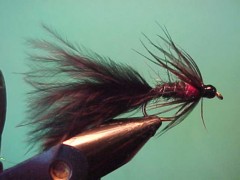
{{+1}}Bead head bibio bugger – Chatto’s original{{-1}}
{{start}}
I use this fly as a point fly for when both boat and bank fishing and have developed three versions. The standard non bead head version is tied on Knapek L series hook in size #8 and has 6 wraps of .015 lead wire hidden in the body and an overall finished length of around 45 mm. A mini bugger version is tied on Knapek L series hook in size #10 and has 4 wraps of .015 lead wire hidden in the body and an overall finished length of around 30 mm. I also tie a bead head version on a Tiemco 3769 hook in size #8 which incorporates a 3 mm black tungsten bead.{{end}}
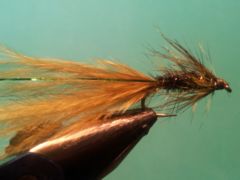
{{+1}}Olive damsel bugger{{-1}}
{{start}}
Keep an eye for swallows dipping on the water feeding on midge. That's a sure sign that there will also be damsel nymphs around and then of course further up the food chain there are likely to be trout feeding on both the midge and the damsel nymphs. This is the time to start thinking about fishing either damsel buggers or olive woolly buggers.{{end}}
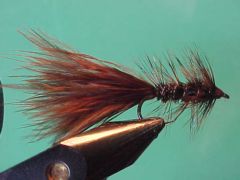
{{+1}}Brown woolly bugger{{-1}}
{{start}}
This is my favourite. I have absolute confidence in this fly and it's my default point fly in fly fishing competitions. That of course doesn't mean that I don't fish other woolly buggers or woolly bugger variations with specific applications in particular fisheries but it does mean that if the buggers that should work (eg a Magoo in Purrumbete or a Tassi bugger in Arthurs lake) isn't working then I will always give my brown bugger a swim.{{end}}
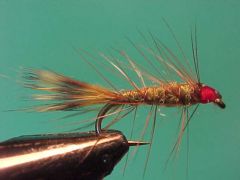
{{+1}}Yabby – Bill’s Eucumbene version{{-1}}
{{start}}
This little woolly bugger type fly was given to me by Jim Blyton. Jim fishes Lake Eucumbene a lot. As is so often the case the locals have developed flies that work for their fishery and this fly is one of those.{{end}}
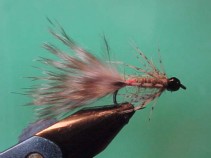
{{+1}}TBH hot butt caddis bugger{{-1}}
{{start}}
If your fishing in water with reasonably numbers of caddis your going to want to give this 3 cm bugger a swim. Caddis represent up to 70% of a trout's diet and whilst this fly is bigger than any caddis nymph I have seen trout love it. It is also a must tie on fly for discoloured water. You can fish it as a nymph but my preference is to fish it across, down and on the swing.{{end}}
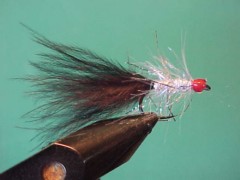
{{+1}}Silver surfer – silver straggle fritz bugger{{-1}}
{{start}}
I was ripping the black tailed version of this fly through the chop with some success when my boat partner asked what fly is that 'silver surfer'. I explained to him that it was just a woolly bugger variant tied with a black tail and silver UV straggle fritz. I tried to give it a real name such as 'silver woolly bugger' but unfortunately 'silver surfer has stuck.{{end}}
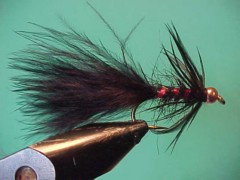
{{+1}}Banded bugger{{-1}}
{{start}}
A similar fly to a Shrek or Bloody Mary this fly is distinguished by the bands of fuzelled seals fur and holographic tinsel along the full length of the body. This is a particularly good point fly early and late in the season when the browns and bows are getting ready to make their spawn run. Brown with red or gold tinsel as well as olive with green tinsel also work well.{{end}}
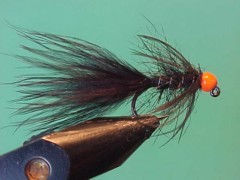
{{+1}}River Jig Bugger – CDC orange TBH and black{{-1}}
{{start}}
This is really good representation of a woolly bugger for river fishing. It sinks well and the jig hook encourages the fly to bounce along the bottom hook point up which of course mitigates snags. Whilst I have set the recipe out below for the brown, black and olive jig buggers I also tie my sparkle bugger and skirted buggers in the form of a jig bugger as shown in the photos below.{{end}}
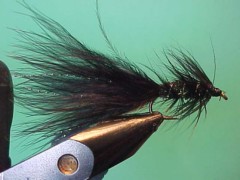
{{+1}}Sparkle bugger{{-1}}
{{start}}
Woolly buggers and their variants would have to be close to the quintessential wet fly. This woolly bugger version is one of my favourate late season still water flies.{{end}}
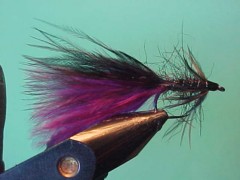
{{+1}}Tassi bugger – Chatto’s version{{-1}}
{{start}}
I was introduced to this variation in the lead up to the 2002 Tasmanian One Fly which by chance I won. Whilst I was not comfortable enough to use this fly in that contest I have used it many times since to great effect.{{end}}













